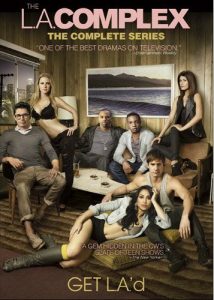“Challengers” gets a lot of mileage out of what is essentially a “Gossip Girl” premise: Two male tennis players – besties who have won the U.S. Open juniors doubles – are both smitten with a rising female star. As with many edgy teen shows, these people aren’t particularly likeable.
From juniors to retirement
But this film from writer Justin Kuritzkes and director Luca Guadagnino is a triumph of style and structure. Plus that teen-TV vibe links up well with the stereotype of tennis players as people who have grown up being told how talented they are, thus stunting their psychological growth.
Mitigating the unlikability of the trio are great performances and the characters’ self-awareness. The first night Tashi Duncan (Zendaya) meets Art Donaldson (Mike Faist) and Patrick Zweig (Josh O’Connor), both asking for her number, she says she doesn’t want to be a “homewrecker” – snark-speak for not wanting to get between their friendship.
“Challengers” (2024)
Director: Luca Guadagnino
Writer: Justin Kuritzkes
Stars: Mike Faist, Josh O’Connor, Zendaya
The actors – in their late 20s to early 30s – take their characters from 2006 to 2019, from juniors through looming retirement. (These folks aren’t impressed with the Djokovic-esque notion of agelessness.) It’s a stretch, especially when O’Connor must play younger or Zendaya older, but “Challengers” trusts that we’ll be engrossed enough to forgive it.
The trust is earned, thanks to the structure. We basically know the story right away because it is told out of order: Tashi – whose potentially Coco Gauff-esque career was cut short by a knee injury — has married Art, who became a superstar. Patrick became a journeyman.
The filmmakers bounce us among the key events over the 13 years, always making it clear where we’re at. Another neat trick: Each act corresponds with each set of the Challenger Tour tournament final the now-former-friends are clashing at in 2019.
Love triangle amid the sporting rectangle
Multiple Grand Slam-winner Art, similar to what Andre Agassi and Andy Murray did when needing to build up rankings and confidence, drops down to play this Challenger. But Patrick – content to stick with a serviceable serve that won’t get him to the ATP Tour – lives on the Challenger Tour. Art means that as an insult, but maybe it’s to Patrick’s advantage on this day.
Set one’s winner is the guy who had the early romantic success with Tashi, set two’s winner vice versa, and then we move on to set three, the decider.
The tennis action is quite good. Although we sometimes notice that the actors’ forms are not professional grade (“King Richard” does slightly better in this facet), they are good enough to get by in a movie. Helping things along are snippets of cliched but plausible commentary from real-world ESPN commentators, similar to what the “Rocky” and “Creed” films do.

Cinematographer Sayombhu Mukdeeprom, editor Marco Costa and composers Trent Reznor and Atticus Ross (favoring intense, dance-style beats) mostly enhance the action. I wonder if Guadagnino is a Hitchcock fan; look for stylish (and maybe purposeful) nods to “Strangers on a Train” and “The Lodger.”
If you’re coming for nuanced tennis strategy, this is not your film; it never intends to be. It’s about the mental side of the game – the players’ relationships with their own psyches – plus the relationships among each of them.
Off-court drama settled between the lines
Tennis is the perfect sport for dramatizing these aspects, and while Kuritzkes’ penning of romantic and sexual dramas might be something out of Zendaya’s TV show “Euphoria,” what’s really special about “Challengers” is that it understands the logistics of a tennis career.
It’s one of the few sports where a locker room is shared by opponents, and the writer lets tension emerge from this oddity. “Challengers” also illustrates the sport’s fine line between riches and rags – something the tours themselves have acknowledged is an issue — via Art and Patrick. The former is rich enough to live out of posh hotels and now plays for legacy, not money. The latter sleeps in his car in the Challenger event parking lot.
(One logical misfire: Tashi couldn’t have an advertising deal with Adidas while attending Stanford in 2006, well before NIL deals were legalized. By accepting the ad money, her college eligibility would’ve ended.)
In structure and tennis portrayal, I find few faults with “Challengers.” As for the trio being full-grown babies, well, it makes them annoying at times, but how can I criticize the film for the very point it is making?
I do think there was room for more emotion in the Art-Patrick friendship and more struggle for Tashi, who says she doesn’t want to break up their friendship then proceeds to do precisely that. Because of the time-hopping structure, a cloud of inevitability hangs over the relationships, in the sense that we know at least one person will be hurt.
But I didn’t know precisely how “Challengers” would end. The way it does end is intense, unpredictable and slightly unearned — like a good match with a mundane last point. Nonetheless, in the annals of tennis movies, when one considers that the story isn’t all that loftier than Kirsten Dunst’s “Wimbledon,” “Challengers” is a remarkable overachiever.

